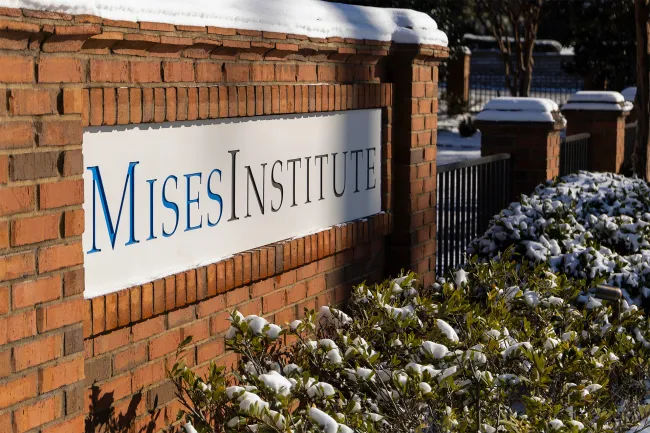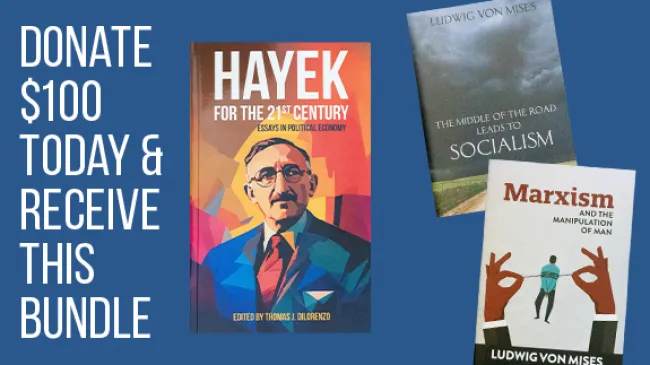It is not uncommon to hear people make the one-sided case for a minimum wage policy by arguing that a minimum wage ought to be implemented so that people get paid more. To be fair, there is some truth in their argument—a higher minimum wage would mean higher nominal wages for the people paid minimum wage after the policy is implemented. The obvious problem with such an argument is that it overlooks several other variables and unintended effects, namely, that by increasing the costs of employing labor, less labor will be demanded (all things being equal), especially if the legal price to hire labor pushes workers’ wages above their discounted marginal value product (DMVP).
In a similar way, one of the stated aims of tariffs is said to be protection and/or encouragement of American jobs. President Trump has spoken favorably of tariffs, making several arguments—tariffs will make us rich, other countries will pay them, and they will replace income tax; tariffs will support American jobs; tariffs are a negotiating ploy for moving toward free trade, etc. These arguments are incorrect and contradictory.
Tariffs did not make America rich. Tariffs have always been a hotly-debated issue in American history and have always restricted free trade and distorted the domestic structure of production. The uneven burden of tariff taxation also was a key argument for income tax (with the mistaken assumption that income tax would replace tariffs; Americans got both). America grew wealthy after the Civil War because of an industrial revolution supported by no income tax, minimal regulatory burden, and sound money (no Fed). America grew wealthy in spite of the tariff, not because of it.
People also tend to miss the tension between tariffs for revenue and tariffs for protectionism. Tariffs for revenue have to be low enough to encourage trade with other nations, but tariffs have to be high enough to limit international trade so that domestic jobs can be protected instead. A choice has to be made.
As for using tariffs as a negotiating tool, it is a risky and costly one. In the meantime, politicians of countries—who do not bear the cost of tariffs as heavily—have no problem waiting while their citizens bear the costs. Further, if tariffs are good and beautiful, and free trade is “unfair” and a “rip off,” then why aim at the ultimate goal of free trade?
The goalposts are continually changing (more like fallacy-hopping), but one would-be goal of tariffs needs to be confronted—tariffs for domestic job protection. Often, on net, tariffs harm domestic employment. While tariffs may project some specific jobs temporarily, this comes at a steep cost to the rest of the economy (including overall employment). The unseen losses in industries, downstream effects, and retaliation by other countries often outweigh the gains to protected sectors. In fact, sometimes the so-called protected industries are negatively affected also.
Economic Theory
When we employ economic theory, we do not mean unrealistic, non-practical speculation, but attempting to consistently trace causes and effects of various actions by employing logically valid, axiomatic economic law. (This is to avoid the objection: “But it’s different in the real world!”). Yes, the “real world” is full of uncertainty, human choices, and unique variables, therefore, the only way to make sense of it is through sound economic theory. Henry Hazlitt helps us with his outstanding “one lesson” of economics:
The art of economics consists in looking not merely at the immediate but at the longer effects of any act or policy; it consists in tracing the consequences of that policy not merely for one group but for all groups. (italics in original)
Economics seeks to consistently examine all the effects of an action or policy, not just the immediate and/or intended effects. Economics looks at what is often overlooked. It also has to do with addressing fallacies—sometimes age-old fallacies—especially since economics “is haunted by more fallacies” than any other subject. For Hazlitt himself, it seems that the fallacies regarding tariffs were the most stubborn and frustrating,
A mere recital of the economic policies of governments all over the world is calculated to cause any serious student of economics to throw up his hands in despair. What possible point can there be, he is likely to ask, in discussing refinements and advances in economic theory, when popular thought and the actual policies of governments, certainly in everything connected with international relations, have not yet caught up with Adam Smith? For present-day tariff and trade policies are not only as bad as those in the seventeenth and eighteenth centuries, but incomparably worse. The real reasons for those tariffs and other trade barriers are the same, and the pretended reasons are also the same.
In this case, we will focus on Hazlitt’s insights regarding tariffs and the argument of domestic job protection and encouragement. While his whole chapter on tariffs is worth reading, we can look at one extended quote where Hazlitt gives an example of a tariff to protect the American sweater industry that has the effect of increasing prices by $5. What are the results on employment?
Americans would be employed in a sweater industry who had not previously been employed in a sweater industry. That much is true. But there would be no net addition to the country’s industry or the country’s employment. Because the American consumer had to pay $5 more for the same quality of sweater he would have just that much less left over to buy anything else. He would have to reduce his expenditures by $5 somewhere else. In order that one industry might grow or come into existence, a hundred other industries would have to shrink. In order that 20,000 persons might be employed in a sweater industry, 20,000 fewer persons would be employed elsewhere.
But the new industry would be visible. The number of its employees, the capital invested in it, the market value of its product in terms of dollars, could be easily counted…. But the shrinkage of a hundred other industries, the loss of 20,000 other jobs somewhere else, would not be so easily noticed. It would be impossible for even the cleverest statistician to know precisely what the incidence of the loss of other jobs had been—precisely how many men and women had been laid off from each particular industry, precisely how much business each particular industry had lost—because consumers had to pay more for their sweaters. For a loss spread among all the other productive activities of the country would be comparatively minute for each. It would be impossible for anyone to know precisely how each consumer would have spent his extra $5 if he had been allowed to retain it. The overwhelming majority of the people, therefore, would probably suffer from the optical illusion that the new industry had cost us nothing. (emphasis added)
Summarizing Hazlitt, the tariff “protection”: 1) adds no net employment, that is, new jobs come into existence or are maintained by legally restricting trade, which enables some jobs, but this is at the expense of the international division of labor and the labor for those jobs now cannot be used elsewhere; 2) other jobs are lost because of increased costs of capital, intermediate goods; 3) more expensive domestically-produced substitutes reduce real wages for everyone, including protected workers); 4) every dollar of increased costs due to tariffs—for both capital goods and final consumer goods—is a dollar that now cannot be saved, spent, or invested elsewhere. Hazlitt also dealt with the welfare losses from the lack of comparative advantage, blocking voluntary trades that would otherwise continue (the very reason the tariffs are needed to “protect” some domestic producers).
In terms of employment, tariffs seek to protect some jobs at the expense of others. However, tariffs increase costs of foreign goods, reducing supply, which causes price increases. This does not just occur for final goods, but for inputs or capital goods, reducing production in many sectors and leading to restructuring and unemployment. Tariffs also warp the structure of production further by devoting labor and resources to sectors that are less efficient (otherwise the tariffs wouldn’t be needed). The increased costs and prices affect all, including workers in protected sectors. The results are reduced employment in the protected country, reduced efficiency, added costs, decreased employment in other sectors and the inhibition of new and more efficient lines of production. On top of that, other countries can affect employment further by retaliatory tariffs, which further decrease trade at the expense of many jobs.
Some Empirical Insights
While being careful with empirical data, especially when it comes to projections and estimates, it is worth noting that several publications have noted the effects of tariffs on domestic employment. By some estimates, the tariffs imposed during the 2018-2019 period lost some 142,000 full-time equivalent (FTE) jobs, and another 29,000 job losses as a result of the retaliatory tariffs. Another empirical study from the same period found,
In terms of economic significance, we find that shifting an industry from the 25th percentile to the 75th percentile in terms of exposure to each of these channels of tariffs is associated with a relative reduction in manufacturing employment of 2.7 percent, with the positive contribution from the import protection effects of tariffs (0.4 percent) more than offset by the negative effects associated with rising input costs (-2.0 percent) and retaliatory tariffs (-1.1 percent).
In other words, the positive growth in protected industries (+0.4 percent) was more than offset by job loss due to rising input costs (-2.0 percent) and retaliatory tariffs (-1.1 percent), with a net effect of -2.7 percent employment in exposed industries. Tariffs shifted and cost jobs, but did not protect them. Another publication said that, economy-wide, Oxford Economics estimated in 2021 that tariffs and the resulting trade war cost 245,000 jobs and reduced real incomes by $675 per household. More recently, Goldman Sachs published a study regarding the estimated effects of the tariffs and it was reported that an increase of 10 percentage points in broad-based tariffs will have a net negative effect on employment—boosting manufacturing jobs by 100,000, but costing 500,000 jobs.
In summary, and in the spirit of Hazlitt, tariffs do not ultimately protect jobs. At best, they protect some jobs at the expense of everyone else and often do not even protect those jobs. Via tariff policy, jobs are shifted, not created. Increased prices, as a result, artificially reduce consumer spending, saving, and investment, leading to invisible job losses elsewhere. Real wages decline as prices rise. Efficiency also decreases by protecting industries that are not globally competitive. Lastly, protectionism disrupts comparative advantage, distorts the structure of production, and leads to economy-wide inefficiencies and unemployment.


